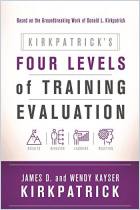Únase a getAbstract para acceder al resumen.

Únase a getAbstract para acceder al resumen.
Donald L. Kirkpatrick and James D. Kirkpatrick
Implementing the Four Levels
A Practical Guide for Effective Evaluation of Training Programs
Berrett-Koehler, 2007
¿De qué se trata?
Discover how your training programs can strengthen your bottom line.
Recommendation
This practical guide, a companion to Donald Kirkpatrick’s Evaluating Training Programs: The Four Levels, provides a framework for putting his system into practice. The book assumes a prior knowledge of the four-level system, but demonstrates how to determine which programs to evaluate and at which level to pitch the evaluation, and how to gather the right evidence and present it in a compelling format. The authors provide many examples of every form they discuss in the book and emphasize the importance of following each level in sequence. The style of writing is rather repetitive and could have been better edited, but the advice is sound. getAbstract recommends this guide to all those involved in learning and development, such as trainers, training designers and managers.
Summary
About the Authors
Donald L. Kirkpatrick is the author of six books and is a professor emeritus at the University of Wisconsin. James D. Kirkpatrick is co-author of Evaluating Training Programs: The Four Levels and Transferring Learning to Behavior.





















Comment on this summary